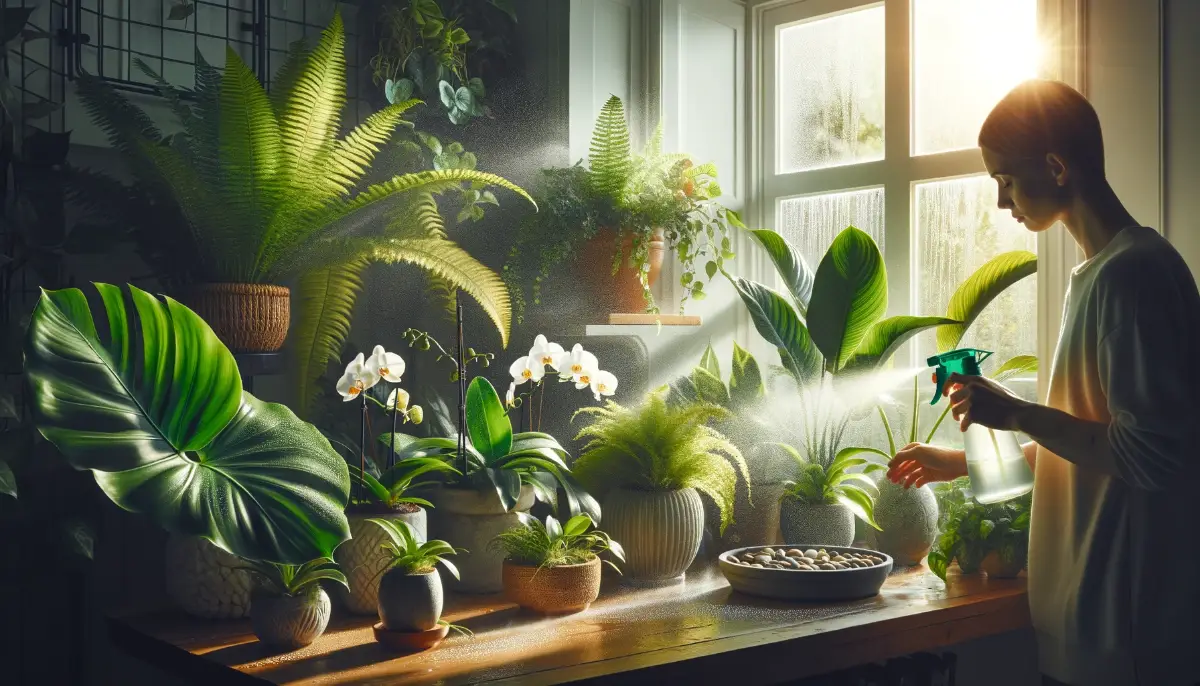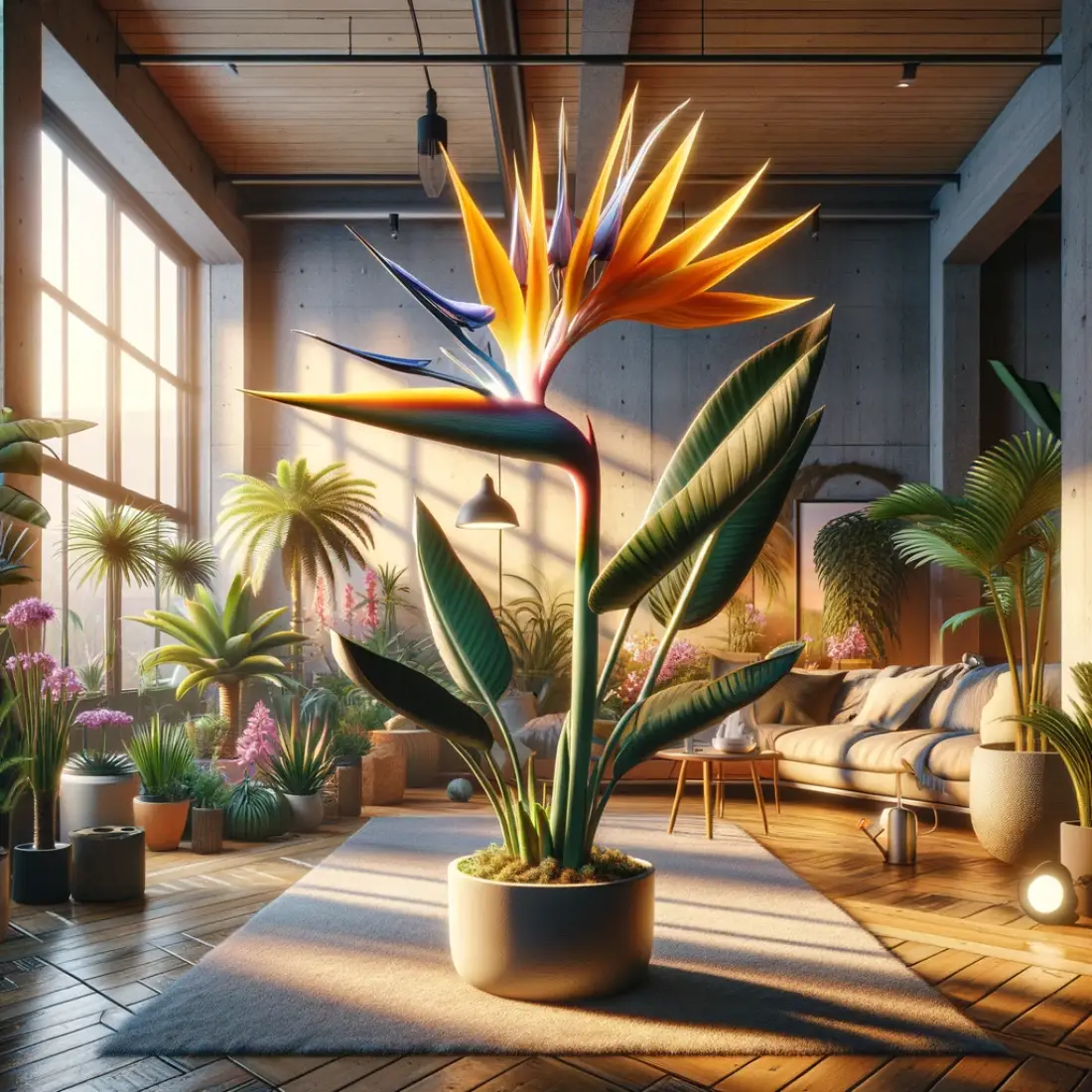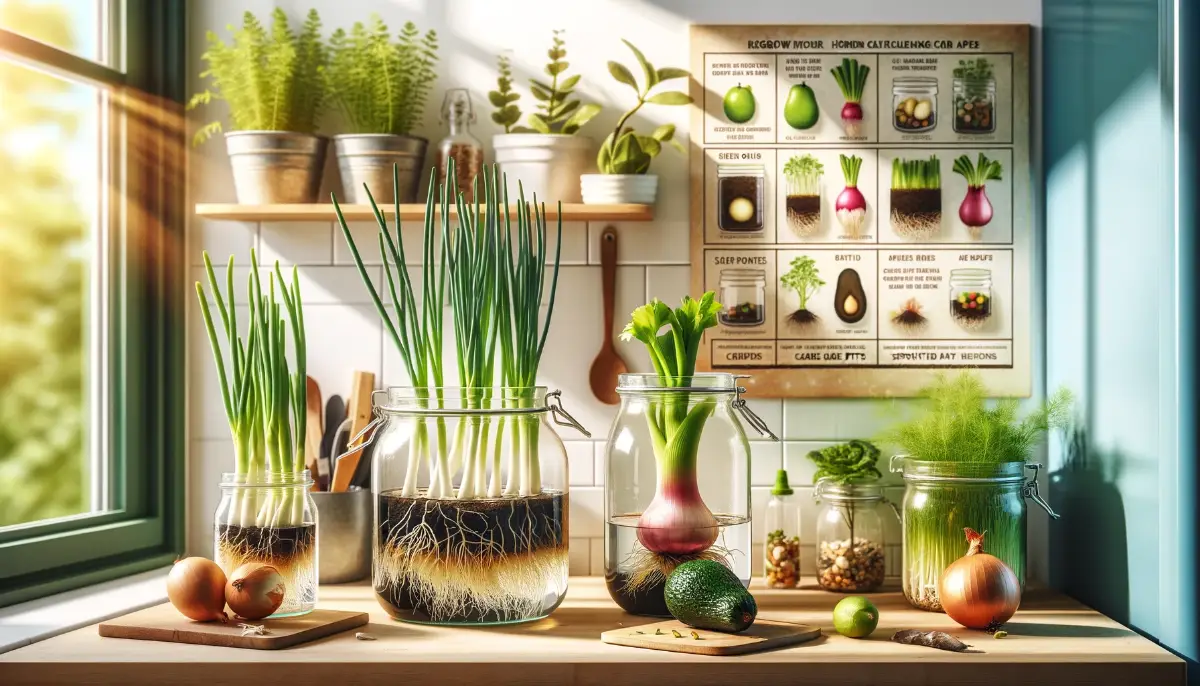The Bamboo Palm (Chamaedorea seifrizii) is a popular houseplant from Central and South American rainforests. Known for its bamboo-like stems and lush, feathery foliage, it thrives in low light and high humidity.
Bamboo Palms have slender, green stems and dense, narrow leaflets, growing 4-12 feet tall indoors, adding a tropical touch to any space. The Bamboo Palm is both decorative and beneficial, enhancing indoor air quality while being easy to maintain.
- Air Purification: Removes indoor toxins like formaldehyde and benzene.
- Low Maintenance: Easy to care for, suitable for all gardening levels.
- Versatility: Adapts to various light conditions, fitting well in different indoor environments.
Ideal Growing Conditions
Light Requirements
- Bright, Indirect Light: Bamboo Palms thrive in bright, indirect light. Place them near windows with filtered sunlight.
- Tolerance to Low Light: They can tolerate low light conditions, though growth may slow.
Temperature
- Optimal Range: Keep the temperature between 65-80°F (18-27°C) for best growth.
- Avoid Drafts and Sudden Changes: Protect the plant from drafts and sudden temperature fluctuations, which can cause stress.
Humidity
- High Humidity Preferred: Bamboo Palms prefer high humidity levels.
- Increasing Humidity: Use methods like misting the leaves, placing a humidifier nearby, or setting the pot on a pebble tray with water to maintain adequate humidity levels.
Soil Type
- Well-Draining Soil: Use soil that drains well to prevent root rot.
- Rich in Organic Matter: A mix that includes peat, pine bark, and perlite is ideal for Bamboo Palms.
Pot Selection
- Drainage Holes: Choose a pot with adequate drainage holes to allow excess water to escape.
- Proper Pot Size: Select a pot that is slightly larger than the root ball to give the roots room to grow.
Watering Guidelines
- Water Thoroughly: Water the plant thoroughly when the top inch of soil feels dry.
- Avoid Overwatering: Ensure the pot has good drainage to prevent water from sitting in the bottom, which can cause root rot.
- Consistent Moisture: Maintain consistent moisture levels, but allow the soil to dry out slightly between waterings.
Organic Fertilizing Schedule
- Balanced Organic Fertilizer: Use a balanced, organic fertilizer, such as compost tea, worm castings, or fish emulsion.
- Monthly Feeding: Apply fertilizer monthly during the growing season (spring and summer) to promote healthy growth.
- Reduce in Dormant Season: Cut back on fertilizing during the fall and winter when the plant’s growth slows.
Pruning and Maintenance
Pruning Tips
- Remove Dead or Yellow Leaves: Regularly trim away any dead or yellowing leaves to maintain the plant’s appearance and health.
- Trim Brown Tips: Cut off any brown tips on the leaves, using clean, sharp scissors to prevent the spread of disease.
General Maintenance
- Clean Leaves: Wipe the leaves with a damp cloth to remove dust and keep them looking vibrant.
- Monitor for Pests: Regularly check for pests such as spider mites, mealybugs, and scale. Treat any infestations promptly with insecticidal soap or neem oil.
- Repotting: Repot the plant every 2-3 years or when it becomes root-bound. Choose a pot that is 1-2 inches larger in diameter than the current one.
Propagation
Division
Timing: The best time to divide Bamboo Palms is during repotting in the spring.
- Remove the plant from its pot and gently separate the root ball.
- Divide the clumps, ensuring each division has roots and stems attached.
- Plant each division in a separate pot with well-draining soil.
- Water thoroughly and place in a location with indirect light.
Seed Propagation (Less Common and More Challenging)
- Obtain fresh seeds from a mature Bamboo Palm or a reputable supplier.
- Soak the seeds in water for 24 hours to soften the outer shell.
- Plant the seeds in a shallow tray filled with a mixture of peat and sand.
- Keep the tray in a warm, humid environment with indirect light.
- Maintain consistent moisture by misting the soil surface regularly.
- Germination can take several weeks to months. Once seedlings are large enough to handle, transplant them into individual pots.
Propagation by division is the most reliable and straightforward method for multiplying your Bamboo Palms, while seed propagation requires more patience and care.
Common Problems and Solutions
Pests
Spider Mites
- Signs: Fine webbing and small, discolored spots on leaves.
- Solution: Increase humidity, mist the plant, and treat with insecticidal soap or neem oil.
Mealybugs
- Signs: White, cotton-like masses on leaves and stems.
- Solution: Wipe affected areas with a cotton swab dipped in rubbing alcohol, and treat with insecticidal soap.
Scale
- Signs: Brown or black bumps on leaves and stems.
- Solution: Remove scale with a soft brush or cloth and treat with neem oil.
Diseases
Root Rot
- Signs: Yellowing leaves, mushy roots, and a foul odor from the soil.
- Solution: Avoid overwatering and ensure good drainage. If root rot occurs, trim off affected roots and repot the plant in fresh soil.
Leaf Spot Diseases
- Signs: Dark, water-soaked spots on leaves.
- Solution: Remove affected leaves and improve air circulation around the plant. Avoid overhead watering.
Environmental Stress
Yellowing Leaves
- Causes: Low humidity, improper watering, or lack of nutrients.
- Solution: Increase humidity, adjust watering schedule, and fertilize appropriately.
Brown Tips
- Causes: Fluoride in tap water, low humidity, or over-fertilization.
- Solution: Use distilled or rainwater, increase humidity, and ensure balanced fertilization.
General Troubleshooting Tips
- Check for Proper Light: Ensure the plant is getting bright, indirect light but not direct sunlight.
- Maintain Consistent Conditions: Avoid sudden changes in temperature and humidity.
- Regular Inspection: Regularly inspect the plant for signs of pests, diseases, or environmental stress.
FAQs About Bamboo Palm Care
How often should I water my Bamboo Palm?
Water your Bamboo Palm when the top inch of soil feels dry. Ensure the pot has good drainage to prevent waterlogging.
What type of light is best for a Bamboo Palm?
Bamboo Palms thrive in bright, indirect light but can tolerate low light conditions. Avoid direct sunlight, which can scorch the leaves.
How can I increase humidity for my Bamboo Palm?
Increase humidity by misting the leaves regularly, placing a humidifier nearby, or setting the pot on a tray filled with water and pebbles.
What should I do if the leaves of my Bamboo Palm turn yellow?
Yellow leaves can be a sign of overwatering, low humidity, or nutrient deficiency. Adjust your watering schedule, increase humidity, and consider fertilizing with a balanced, organic fertilizer.
How do I deal with pests on my Bamboo Palm?
Common pests include spider mites, mealybugs, and scale. Treat infestations with insecticidal soap or neem oil, and regularly inspect the plant for early signs of pests.
Can I propagate my Bamboo Palm, and how?
Yes, you can propagate Bamboo Palms through division. During repotting, gently separate the root ball into smaller clumps and plant each in a separate pot with well-draining soil.
What type of soil is best for a Bamboo Palm?
Use a well-draining potting mix rich in organic matter. A mix of peat, pine bark, and perlite works well for Bamboo Palms.
How often should I fertilize my Bamboo Palm?
Fertilize monthly during the growing season (spring and summer) with a balanced, organic fertilizer. Reduce or stop fertilizing during the fall and winter.
Why do the tips of my Bamboo Palm’s leaves turn brown?
Brown tips can result from fluoride in tap water, low humidity, or over-fertilization. Use distilled or rainwater for watering, increase humidity, and ensure proper fertilization.
When should I repot my Bamboo Palm?
Repot your Bamboo Palm every 2-3 years or when it becomes root-bound. Choose a pot that is 1-2 inches larger in diameter than the current pot to give the roots room to grow.












